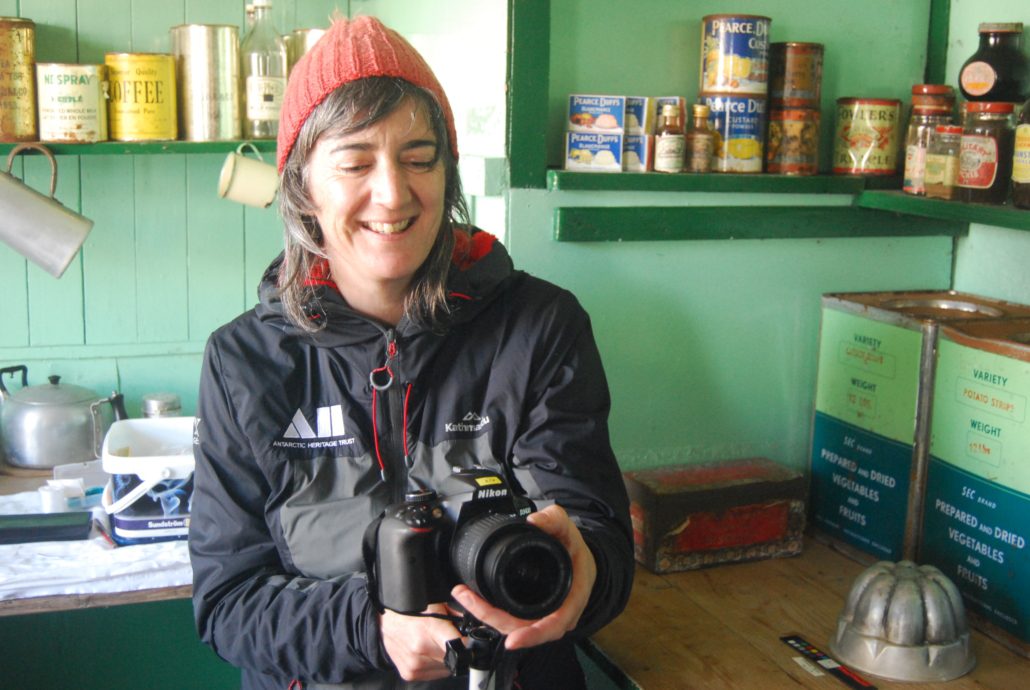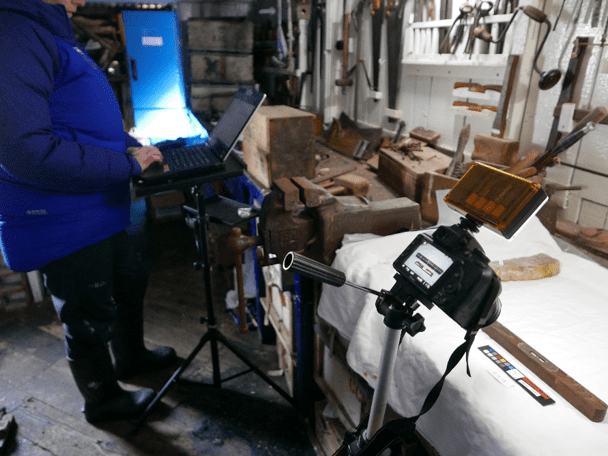Conservation Assessment – Context and Aims
By Lizzie Meek
Blog number five. As part of our multiyear support agreement with UKAHT, Artefact Conservation Programme Manager Lizzie travelled to the Antarctic Peninsula to survey and assess artefacts at Bransfield House, the main building of ‘Base A’ at Port Lockroy.
‘What on earth are you doing here?’ asked a surprised friend of mine who arrived at Port Lockroy as a tourship safety guide, and bumped into me in the hallway of Bransfield House. Yes indeed, what. Both Sophie and I have travelled long distances to get to Port Lockroy, but we’ve also spent much of the previous year working together by long distance email and skype meeting with the UKAHT an their heritage team, as part of a wider project to conserve and maintain the six historic bases on the Antarctic Peninsula which UKAHT cares for. There’s a project on to survey, laser scan and photogrammetrically capture the buildings, create accurate architectural drawings, describe and understand the building condition, and catalogue and condition survey all of the artefacts across the six bases.
In previous seasons, we have both carried out the same type of work at other locations – Sophie at Horseshoe (Base Y) and myself at Stonington (Base E). This season, for the first time we get to work together as a team. This is not only heaps of fun, but it has the advantage of making the work faster and more efficient, and utilising our different background and skills.
To this project I am bringing 12 years of experience with the Antarctic Heritage Trust over in the Ross Sea region, where we have carried out intensive and long running conservation projects to preserve the expedition bases of the Heroic era explorers – Scott, Shackleton, Borchgrevink. Latterly we worked on The TAE era base of Sir Edmund Hillary, and the building at Port Lockroy, being 1944 but modified through to the 70’s is closer in flavour to Sir Ed’s hut.
For any historic collection, knowing what you have, where it is, and what condition it is in are the fundamental components of the pbject database. We are using a collections database called MODES, and into this go the objects’ dimensions and description along with a rating of 1-4 depending on its condition, with 1 being ‘as new’, and 4 being extremely unstable.
Taken all together, the data from some 12,000 items which we have collected this season at Port Lockroy, will provide a picture to the UKAHT of the overall condition of these Antarctic Peninsula collections. Knowing the numbers and types of objects will enable them to plan for conservation projects in the future. Every object gets an identification photograph taken. Sophie has ended up doing all of the data entry whilst I take the photographs. She says she is perfectly happy with this arrangement although I have occasionally heard her swearing at the computer….






 Sophie Rowe/UK Antarctic Heritage Trust
Sophie Rowe/UK Antarctic Heritage Trust